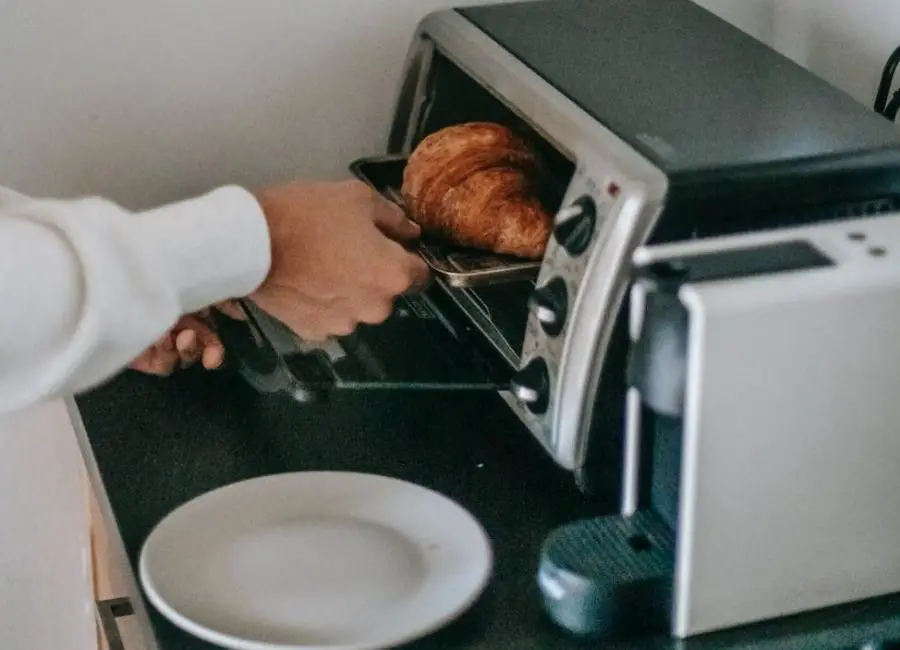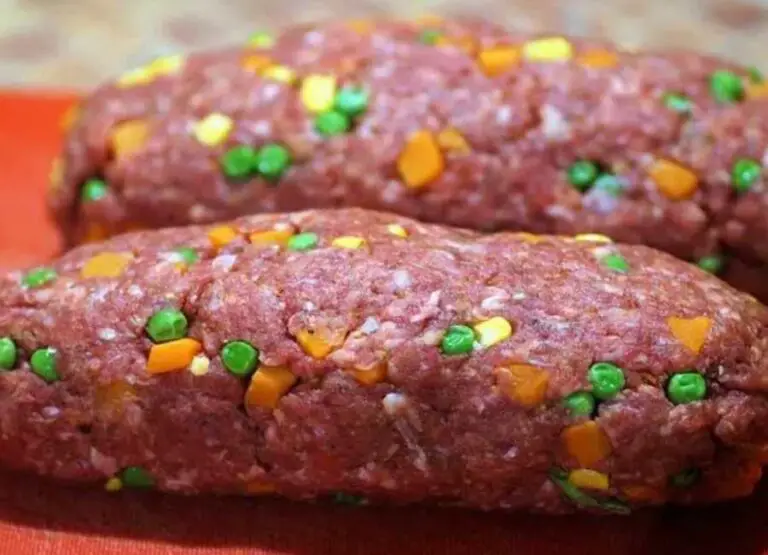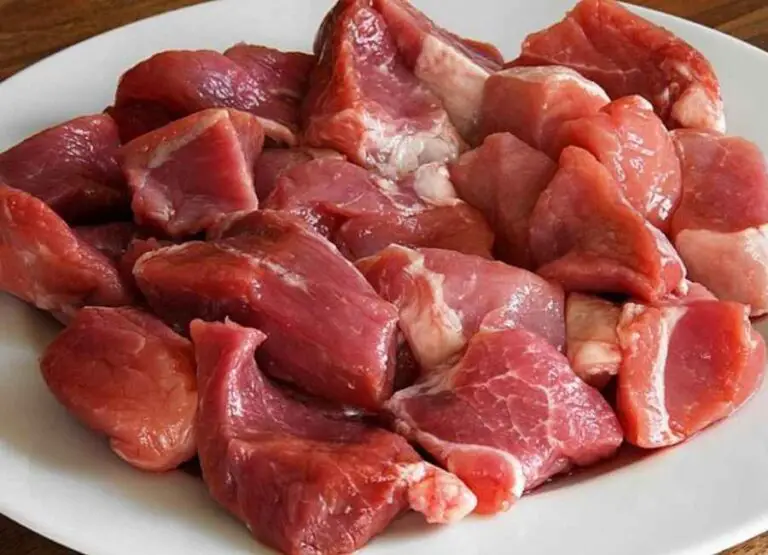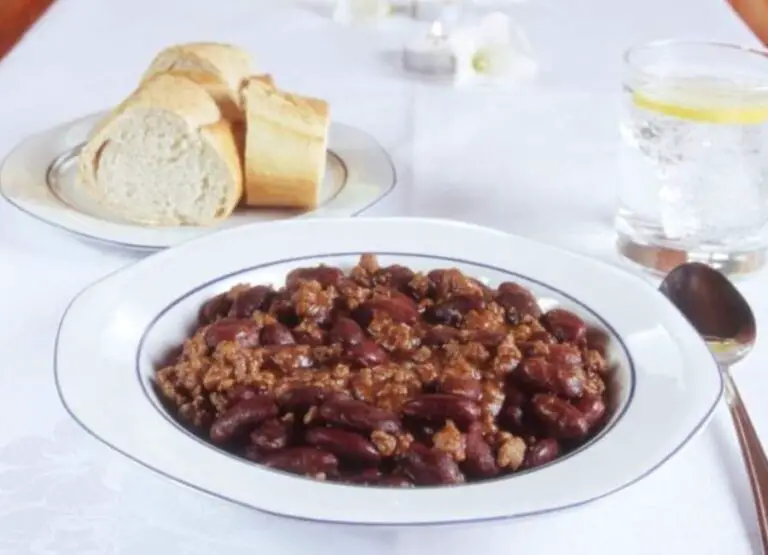14 Important Microwave Cooking Safety Tips
Microwave ovens have become an essential part of our daily lives, allowing us to cook and reheat food quickly and easily.
However, despite their convenience, microwave ovens can pose serious dangers if not used properly.
From exploding eggs to scalding hot liquids, there are a variety of hazards associated with microwave cooking.
In this blog post, we’ll explore some simple tips and tricks to ensure that you stay safe while using your microwave oven.
Whether you’re a seasoned pro or a novice cook, these safety tips will help you avoid any potential mishaps and cook your food to perfection every time.
Microwave Cooking Safety
The following are some of the most important microwave cooking safety you should know:
1. Beware of Overheating
Overheating food in the microwave can result in a variety of problems, including food burning, drying out, or catching fire.
It’s critical to keep an eye on your food while it’s cooking and to stick to the cooking periods specified in recipes or on packages.
If you’re not sure how long to cook for, start with a lesser period and gradually increase it until the dish reaches the temperature you want.
2. Follow Package Instructions
Many microwaveable meals and snacks include microwave heating instructions.
These guidelines are designed to guarantee that the food is correctly heated and to avoid any potential safety hazards.
To achieve the best results and ensure safety, read and follow the instructions on the packaging.
3. Use Microwave-Safe Containers
Microwave-safe containers are carefully engineered to resist microwave heat without warping or leaching dangerous chemicals into your food.
Look for microwave-safe containers or follow the manufacturer’s directions.
Microwave-safe glass, ceramic, and some types of plastic containers are appropriate possibilities.
Avoid using metal or foil containers in the microwave since they might generate sparks and harm the equipment.
4. Avoid Sealed Containers
Never microwave fully sealed containers because pressure can build up and cause them to break.
This may result in burns or other harm. To avoid this, always leave a vent or aperture for steam to escape during cooking.
To allow steam to escape while keeping your microwave clean, leave a small gap in the container or use microwave-safe covers with built-in vents.
5. Stir and Rotate
Stir your food occasionally during the microwave heating procedure to guarantee even cooking.
Some microwaves have hot spots, which means that some parts may heat up faster than others.
Stirring helps to properly distribute heat, resulting in more consistent cooking.
Furthermore, if your microwave lacks a rotating plate, consider manually turning your dish halfway through cooking to promote uniform heating.
6. Use Microwave-Safe Covers
Choose microwave-safe covers, microwave-safe paper towels, or microwave-safe plastic wrap for covering your food in the microwave.
These solutions help to keep moisture levels in the food stable, resulting in superior texture and flavor.
When heated, normal plastic wrap or coverings that are not expressly labeled as microwave-safe can melt or release dangerous compounds into the food.
7. Avoid Superheating Liquids
When liquids are heated in the microwave beyond their boiling point without agitation, superheating can occur.
The liquid may appear peaceful, but it might explode abruptly if disturbed or if an object, such as a spoon, is placed in it.
Stir liquids at regular intervals during heating to maintain even heat distribution and avoid superheating.
Additionally, when adding objects to hot liquids, exercise caution because they might cause quick boiling or splattering.
8. Mind Your Utensils
When using utensils in the microwave, use microwave-safe utensils. Utensils made of wood, glass, or ceramic are generally safe.
Metal utensils can create sparks and damage to the microwave, so avoid using them.
Plastic utensils should be microwave-safe and labeled as such to avoid melting or releasing dangerous chemicals when heated.
9. Check for Hot Spots
Before eating your microwaved meal, lightly touch it or take a little bite to check for hot areas.
Microwaves can cause uneven heating, causing some regions to be hotter than others.
By ensuring that the food is evenly heated throughout, you limit the chance of burns or discomfort from eating too hot areas.
10. Be Cautious with Eggs
Microwaving eggs in their shells can have disastrous repercussions. The buildup of steam within the shell can lead it to explode, creating a messy and even deadly situation.
Always crack eggs into a microwave-safe container before cooking them in the microwave.
Before microwaving, pierce the yolk and whites with a fork or toothpick to release steam and prevent the eggs from bursting.
11. Regular Maintenance
Regular maintenance is required to ensure that your microwave functions safely and efficiently.
Wipe off the inner and exterior surfaces of the microwave on a frequent basis to keep it clean.
Examine the unit for evidence of damage or dysfunction, such as frayed wires or malfunctioning door latches.
If you discover any problems, have your microwave repaired by a professional as soon as possible!
12. Avoid Overloading the Microwave
Too many dishes or containers in the microwave can restrict heat circulation, resulting in uneven cooking.
To ensure optimal heat diffusion, allow your food plenty of room.
Consider varying the cooking durations of various things or using different microwave-safe dishes if you need to heat them all at once.
13. Handle Hot Containers with Care
It is critical to protect your hands from burns when retrieving hot containers from the microwave.
To handle hot foods and containers, always use oven mitts or heat-resistant gloves.
Keep in mind that containers can remain hot even after the food inside has cooled, so use caution while handling them.
14. Practice Food Safety
Microwave cooking does not absolve you from following basic food safety precautions.
To avoid foodborne infections, it is critical to handle raw meats, poultry, and seafood with care and properly cook them to suitable internal temperatures.
To guarantee that these goods reach the appropriate safe temperatures, use a food thermometer.
Learn more about cooking raw meat in the microwave.
Common microwave cooking safety myths
Microwave ovens have become an integral part of modern kitchens, and they are extremely useful for quickly cooking meals, reheating leftovers, and defrosting frozen food.
However, there are several common myths surrounding the safety of microwave cooking that have been circulating for years.
Let’s address some of these myths below:
Myth #1: Microwave ovens release harmful radiation.
Fact: Microwave ovens do not produce harmful radiation. They use electromagnetic waves to heat food, and these waves interact only with the water molecules in the food. As a result, they do not produce ionizing radiation, which can damage cells and cause cancer.
Myth #2: Microwaving food in plastic containers and wraps releases harmful, cancer-causing substances.
Fact: Plastic containers and wraps labeled as safe for microwave use are not known to release harmful substances when used as intended. However, it is always a good idea to follow the manufacturer’s guidelines and avoid wrapping foods with plastic wrap that is not labeled for microwave use.
Myth #3: Food cooked in a microwave oven is not as healthy as food cooked using other methods.
Fact: There is no evidence to suggest that cooking food in a microwave oven is less healthy than cooking food using other methods. As long as you follow the instructions and use the appropriate power and timing settings, microwave cooking can be a healthy and convenient way to prepare food.
Myth #4: Microwaving food can cause it to lose nutrients.
Fact: Some nutrients may break down when exposed to heat, whether it be in a microwave or other cooking method. However, nutrients can also be lost during other cooking methods such as boiling or frying. It’s always a good idea to follow best practices for cooking to retain the most nutrients possible.
Learn more about cooking raw chicken in the microwave.
Microwave Safety for Children and Pets
Microwave safety is important for all users, including children and pets. It is crucial to ensure that microwave-safe dishes and containers are used and that instructions for use are followed carefully.
Children should not be allowed to operate microwaves unsupervised and should be taught basic safety precautions such as not placing metal objects in the microwave and not touching hot dishes.
Pets, especially those that are small enough to enter the microwave, should be kept away from the appliance and not allowed to play near it.
Additionally, food and drink that is intended for consumption by pets or children should be prepared, handled, and stored in accordance with appropriate food safety guidelines to prevent the spread of illness or infection.
Learn more about thawing ground beef in the microwave.
Guidelines for safe reheating and defrosting in the microwave
When it comes to reheating and defrosting food in the microwave, there are a few key guidelines you should follow to ensure that your food is safe to eat.
Here are some general tips:
- Always make sure to follow the specific instructions for your microwave, as they can vary by model.
- When defrosting meat, poultry, or fish, use the defrost setting on your microwave or set it to a low power level and defrost for short periods of time, checking frequently until the food is completely thawed.
- When reheating leftovers, make sure they reach an internal temperature of 165°F before eating.
- Stir or rotate the food frequently to make sure it heats evenly.
- Avoid reheating or defrosting in plastic containers unless they are labeled microwave-safe.
- Do not refreeze food that has been defrosted in the microwave, unless it has been cooked first.
It’s also important to note that some foods may not be suitable for reheating in the microwave, such as whole eggs in the shell or anything in a can. Always follow proper food safety guidelines to avoid foodborne illness.
Actions to take in case of a microwave fire
If there is a fire in your microwave while cooking, it is important to take immediate action to prevent the fire from spreading and causing further damage.
Here are some steps you can take:
- Turn off the microwave: This should be your first step. Stop the cooking process to avoid further heating of the food.
- Keep the door closed: Opening the door can cause oxygen to rush in and increase the fire, so it is important to keep the door shut to contain the fire.
- Unplug the microwave: If the fire is not too big and you can reach the plug easily and safely, unplug the microwave to cut off the power supply.
- Use a fire extinguisher: If the fire is spreading and you have a fire extinguisher, use it to put out the fire. Make sure to follow the instructions on the extinguisher and aim at the base of the fire.
- Use baking soda or cover with a lid: If a fire extinguisher is not available, you can try to smother the fire with baking soda or cover it with a lid. Do not use water, as it can cause an electrical shock.
- Call for help: If the fire is out of control or you are unable to put it out, call the fire department immediately and evacuate the area.
Dealing with overheating or malfunctioning microwave ovens
If your microwave is overheating or malfunctioning, there are a few things you can try to fix the issue.
Here are some steps you can take:
- Check for any visible damage: Before you do anything else, inspect your microwave for any visible damage. Look for cracks in the door, warped or melted materials, or anything else that looks out of place.
- Clean the microwave: A dirty microwave can cause it to overheat. Make sure to clean the inside of the microwave, especially if there is any grease or food buildup. You can use a mixture of water and vinegar to clean the interior and exterior of the microwave.
- Check the fan: If your microwave is overheating, it could be due to a faulty fan. Make sure the fan is working properly and not obstructed by any debris. You can tell if the fan is working by listening to it while the microwave is in use.
- Check the door switch: The door switch is responsible for turning off the microwave when the door is opened. If the switch is faulty, it could cause the microwave to overheat. You can use a multimeter to test the switch for continuity.
- Call a professional: If the above steps don’t solve the problem, it’s best to call a professional to diagnose and fix the issue.
It’s important to take any issues with your microwave seriously, as overheating or malfunctioning can be a fire hazard.
Always operate your microwave according to the manufacturer’s instructions and never leave it unattended while in use.
FAQs
Is it safe to use a microwave for cooking food?
Yes, it is generally safe to use a microwave for cooking food. However, it is important to follow the manufacturer’s instructions and safety guidelines to ensure that you are using your microwave safely.
Can microwaving food cause it to become radioactive?
No, microwaving food does not make it radioactive. However, certain types of plastic containers can melt or release harmful chemicals when exposed to high temperatures, so it’s important to use microwave-safe containers.
Is it safe to heat food in plastic containers in the microwave?
It is generally safe to heat food in plastic containers in the microwave, as long as the containers are labeled as microwave-safe. However, it’s a good idea to avoid using plastic containers with scratches or other signs of wear, as these can harbor bacteria and may release harmful chemicals.
Can using metal in the microwave be dangerous?
Yes, using metal in the microwave can be dangerous, as it can cause sparks and even start a fire. It’s important to avoid using any metal containers or utensils in the microwave.
What should I do if my food catches fire in the microwave?
If your food catches fire while cooking in the microwave, immediately stop the microwave and keep the door closed. Don’t open the door or attempt to remove the container until the fire has extinguished.
Are there any foods that I should avoid microwaving?
Some foods can become dangerously hot or even explode if microwaved, so it’s important to use caution when cooking certain foods in the microwave. This includes eggs in the shell, hot peppers, and foods with high water content (like grapes or potatoes). Always follow cooking instructions carefully and use common sense when microwaving food.
Conclusion
In conclusion, microwave cooking is convenient and time-saving, but it can also be dangerous if not done properly.
By following some simple safety guidelines such as using microwave-safe containers, regularly checking the temperature of food, and keeping an eye on the microwave while it’s in use, you can enjoy your meals with peace of mind.
Stay safe and happy cooking!





![Cooking Raw Meat In Microwave [Explained]](https://foodcreeks.com/wp-content/uploads/2023/02/Cooking-Raw-Meat-In-Microwave-768x555.jpg)
![Is Lunch Meat Processed Food [Answered]](https://foodcreeks.com/wp-content/uploads/2023/02/Is-Lunch-Meat-Processed-Food-768x555.jpg)
